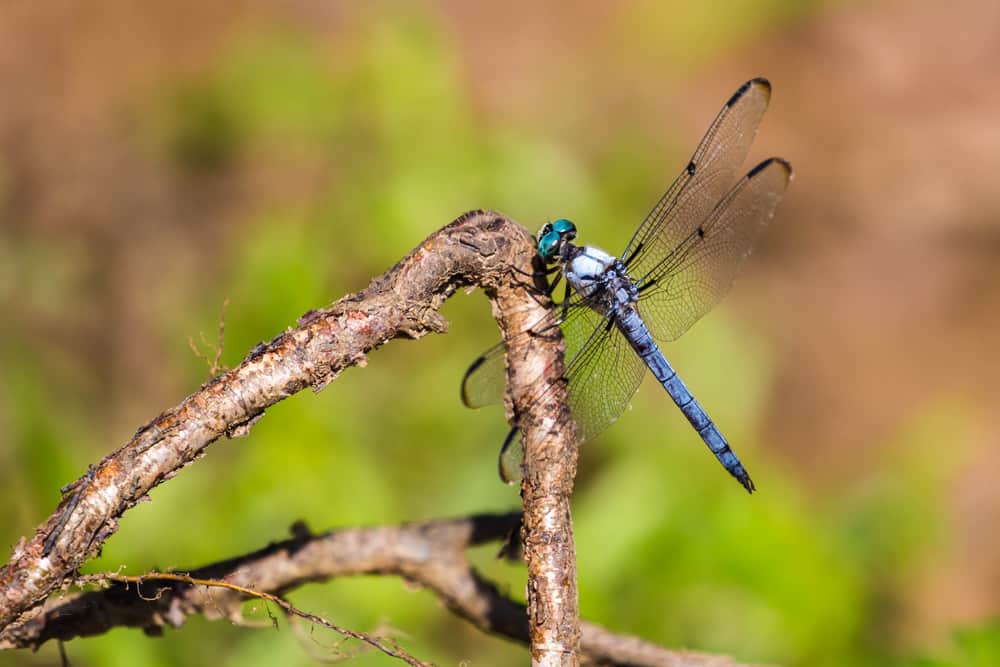NatureZen: The Dragonfly Olympics
words and photos by Melissa McMasters
A few weeks ago, I participated in a global community-science project called the Odolympics, named for Odonata, the taxonomic order containing dragonflies and damselflies. Like the Great Backyard Bird Count or a BioBlitz, the Odolympics harnesses the time and energy of regular naturalists like you and me to create a snapshot of the diversity, population size, and distribution of creatures on Earth.
I had to spread my search over two days, both because it was miserably hot and my endurance clock expired pretty quickly, and because I missed a few common species on the first day (although I found some interesting, rarer ones instead). Here’s a look at the dragonflies I ran across at Shelby Farms Park (near the community gardens) and Nonconnah Greenbelt Park in Collierville. (See this previous NatureZen for the damselflies!).
In order from tiny to “is that thing bigger than a hummingbird?!”:
The Eastern amberwing likes still or slow-moving water, so you’ll frequently see its bright orange wings flashing on the edge of your local pond.
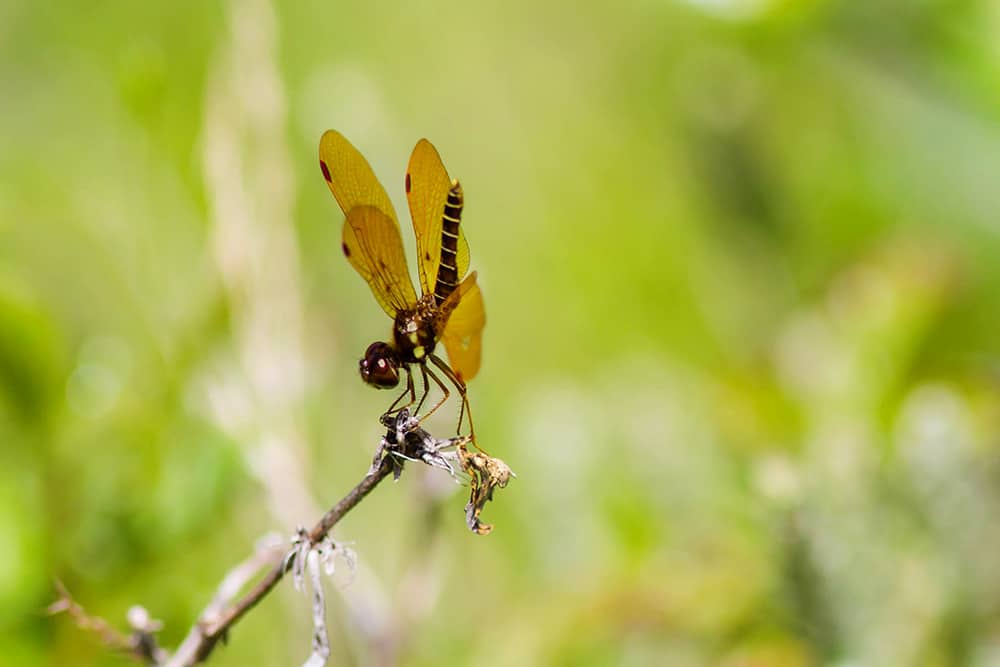
Do you have tiny blue dragonflies around your house, ones that seem pretty friendly and may perch on your car antenna or fencepost? Those are blue dashers, one of our most common dragonflies.
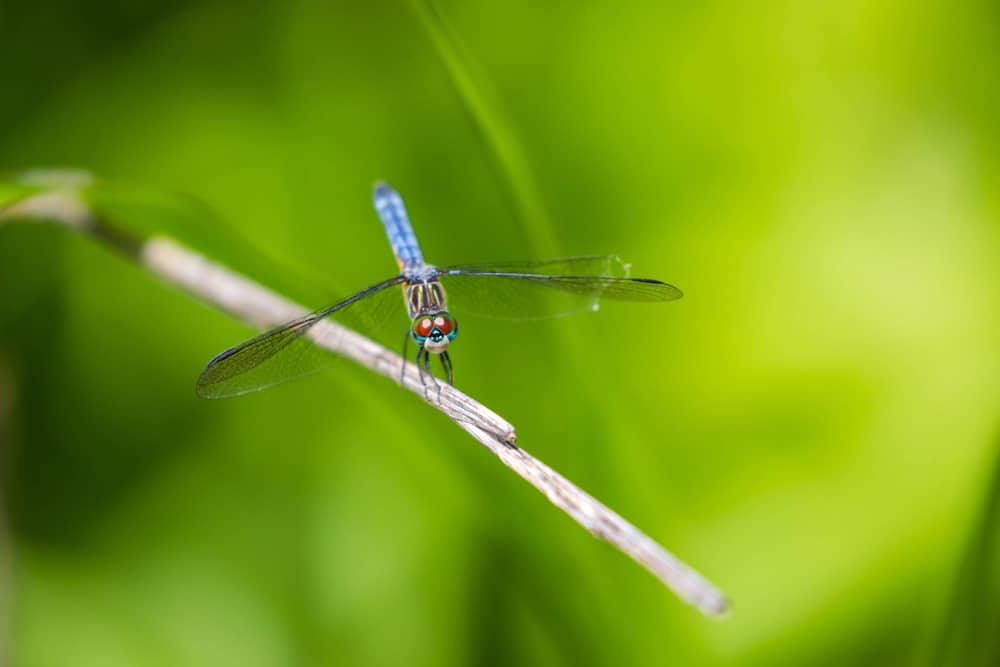
Another frequent backyard visitor is the common whitetail. Males raise their chalky white abdomens to signal they’re defending their territory. That frosty coating is called pruinosity, a bloom of wax particles that covers up the color underneath.
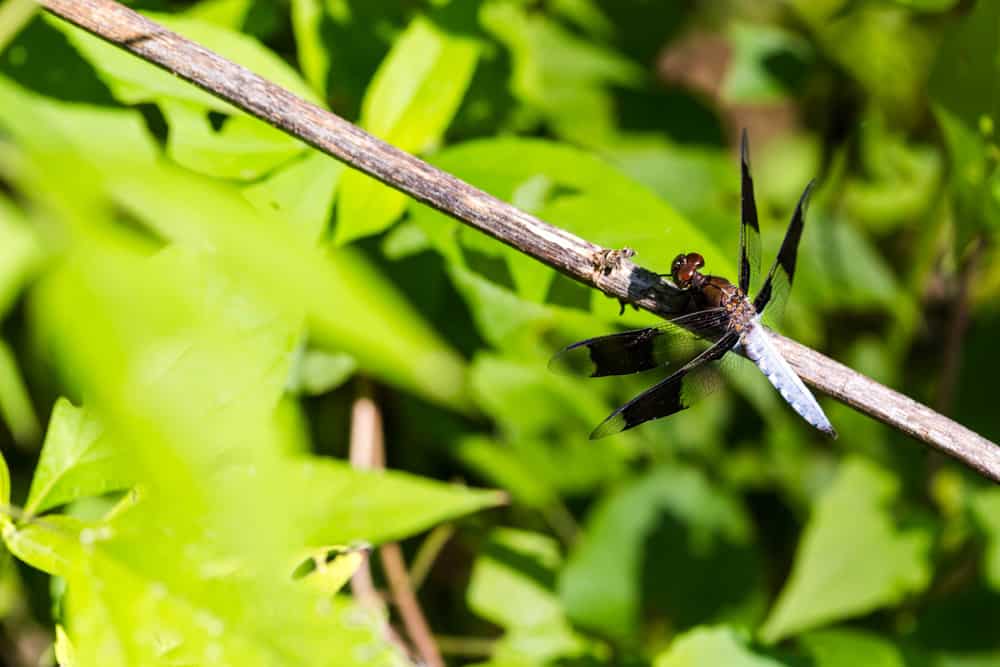
Widow skimmers have a similar color palette and are often found alongside common whitetails. I always assumed they were named for their mourning cloak-type coloration. It turns out it’s because, unlike with many other dragonflies, the males of this species do not guard the females as they lay their eggs. This leaves them effectively “widowed” after they mate. Stone-cold.
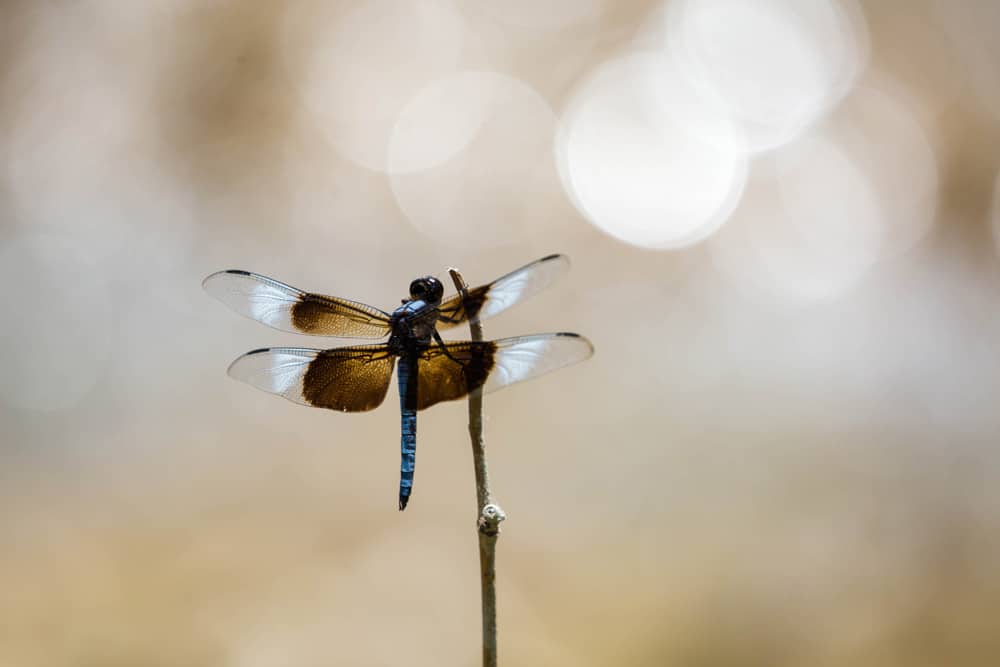
Eastern pondhawks are also common pond residents. To date, this is the only kind of dragonfly that I’ve seen eating a member of its own species (although there are certainly others that do so!). She looks so innocent, but she’s a voracious predator!
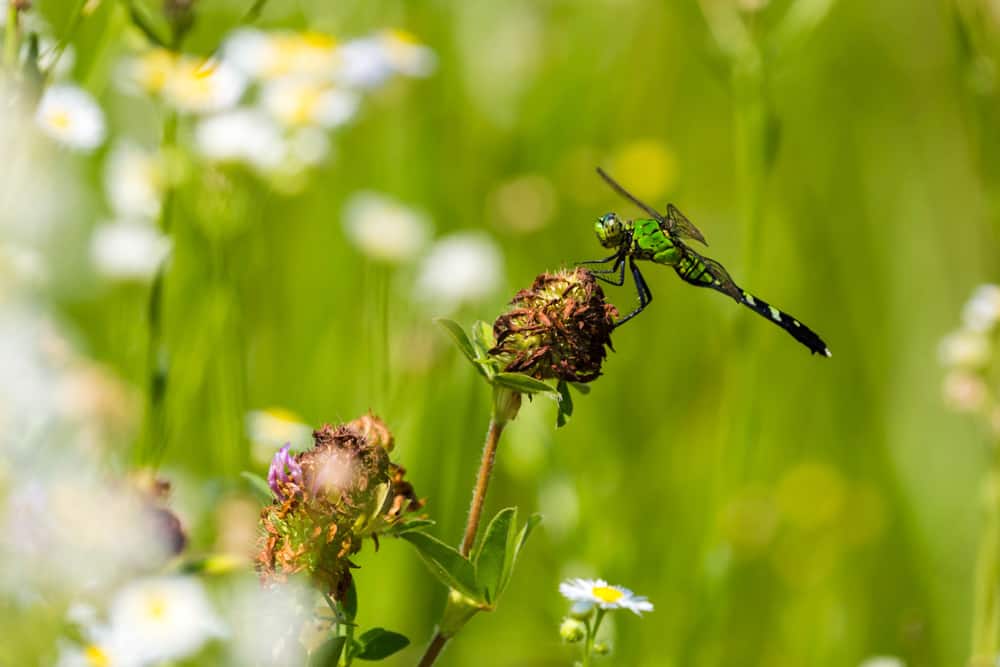
Spangled skimmers look very similar to pondhawks (the males are both a frosty light blue), but they are given away by the white spots on each wing that make them sparkle just a little in flight.
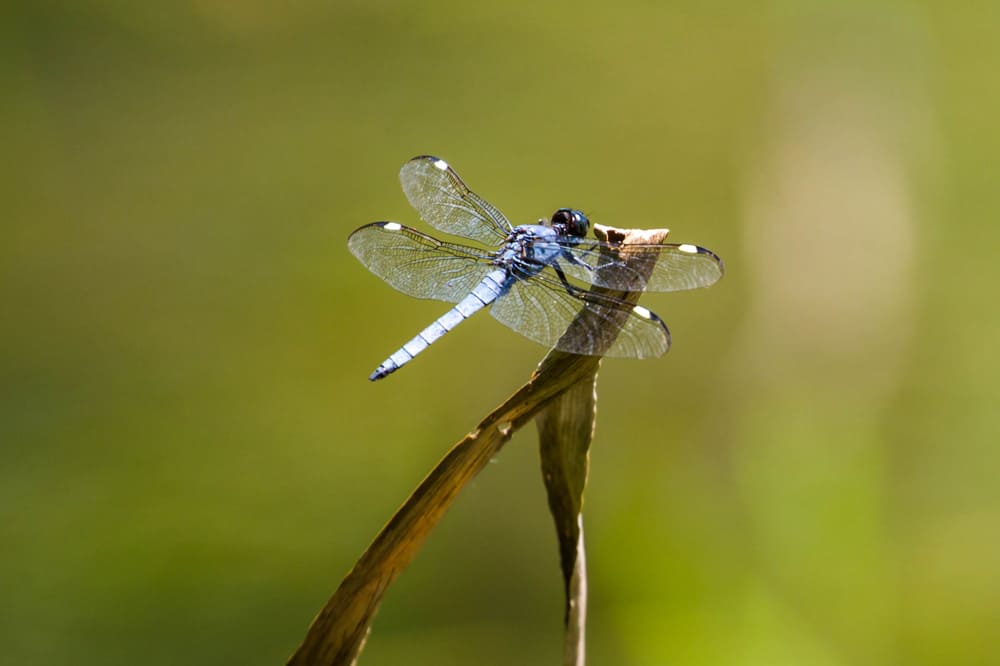
You’ll never mistake a male slaty skimmer for anything else–they’re our only all-black dragonfly locally, and their faces are a beautiful deep violet in the right light. Females are another story. Join us sometime in the future for “NatureHeadaches: Creatures That Look Exactly the Same Unless You’re Very Well-Trained or Have Powerful Magnification Equipment!” It’ll be scintillating.
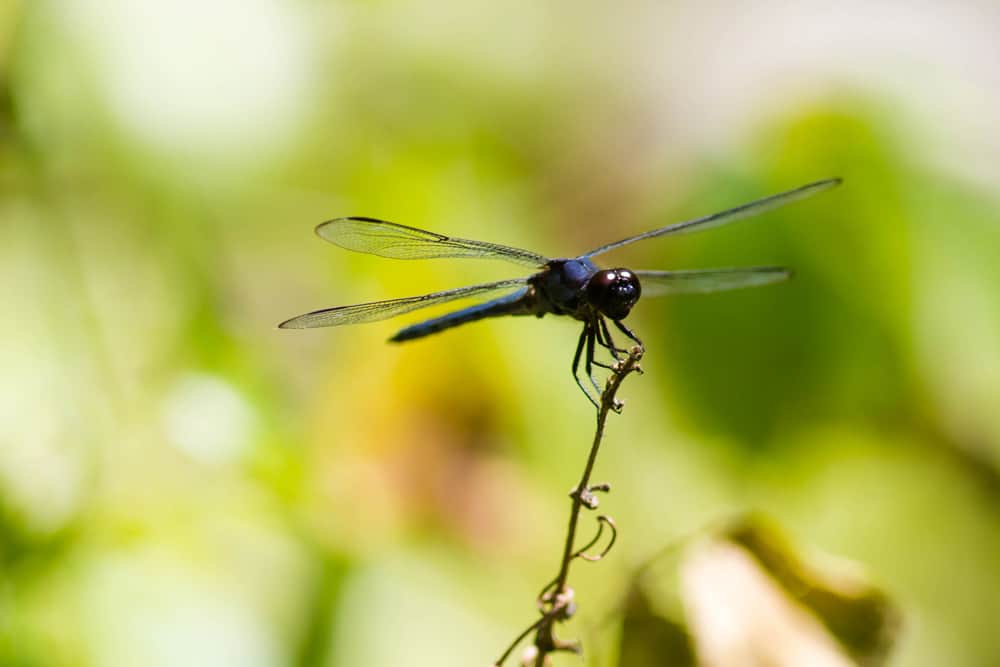
Our final skimmer is the great blue skimmer, the rare dragonfly you’ll encounter in the Old Forest. They’re much happier in the shade than these other dragonflies, and every now and then after a rain you can find females depositing eggs into small puddles along the paved trail.
Next we have a member of the clubtail family, a group that displays abdomens wider at the end than in the middle. The jade clubtail has a barely-visible club, but a beautiful combination of colors that help it blend into the grass when it wants to hide.
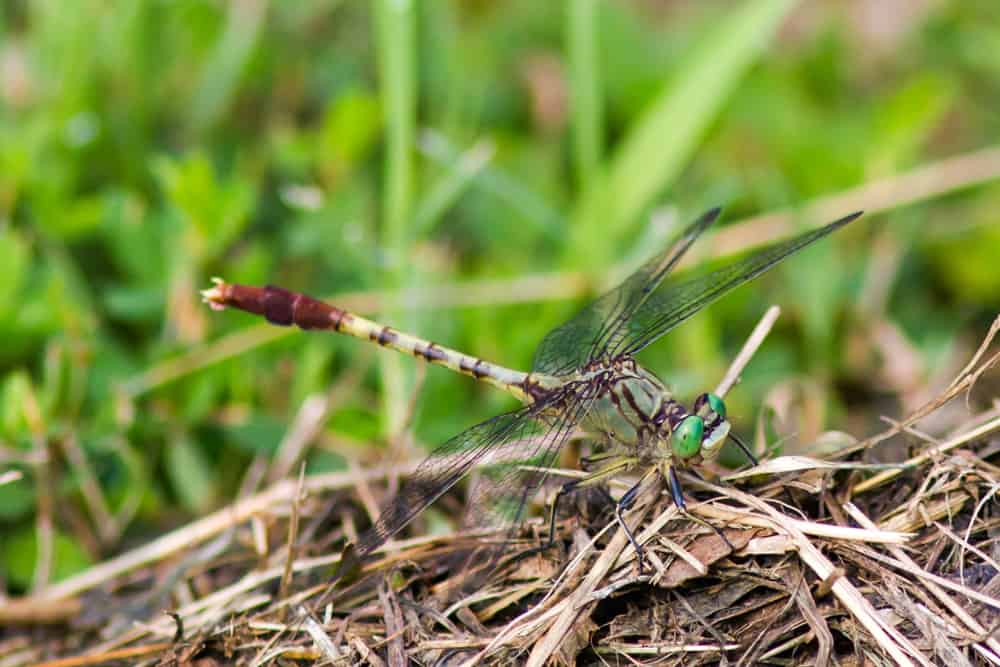
You can see a bit more pronounced club on this common sanddragon, my favorite find of the weekend. On day two, one parked itself right in front of me and proceeded to look at me from every angle. Having established a comfort level, I offered it my finger as a perch, and it crawled right on. I think my heart grew three sizes.
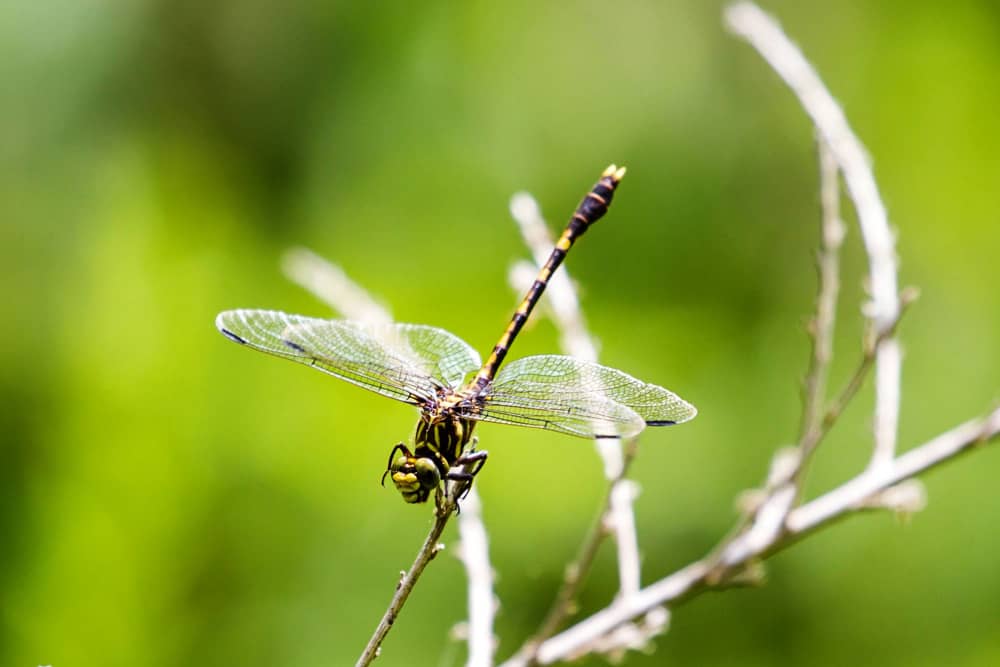
A frequent sight zooming around way overhead is the prince baskettail, a member of the emerald family (named for their green eyes). In the rare event that I see one perched, it generally has its abdomen curled up vertically and its head tucked in.
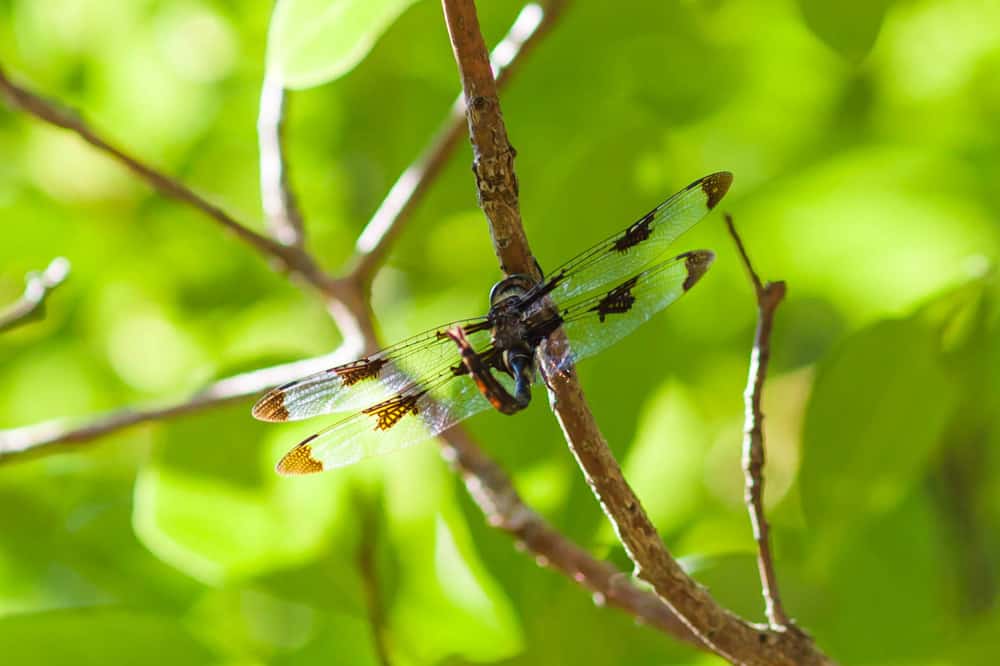
My most unusual spotting of the weekend was this royal river cruiser at Shelby Farms Park. Another green-eyed beauty, it was flying back and forth overhead, occasionally swooping down to grab a mosquito that was pursuing me. (Dragonflies truly are dear friends.)
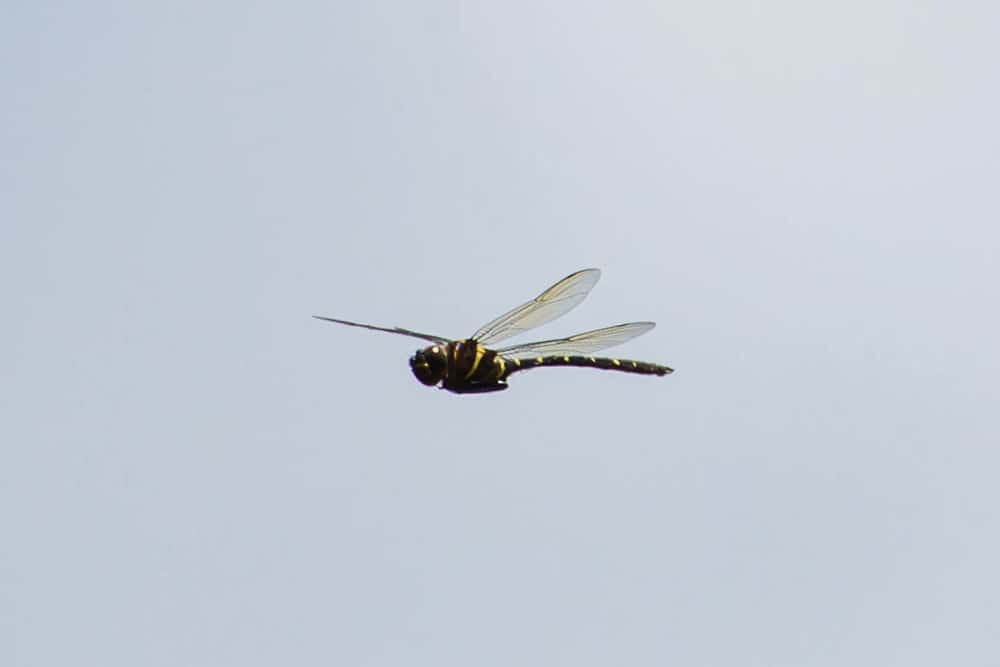
Last but certainly not least, I visited my favorite spot for swamp darners, which are the largest dragonflies in our area. (Their wingspan can reach nearly five inches!) A few weeks ago I stumbled into an area where dozens of them were flying frenetically and hawking insects, and I felt like I’d stepped back into prehistory. These are also dragonflies you’ll find in the Old Forest, because they enjoy shade and temporary ponds. Don’t be afraid if you see this giant flying at you!
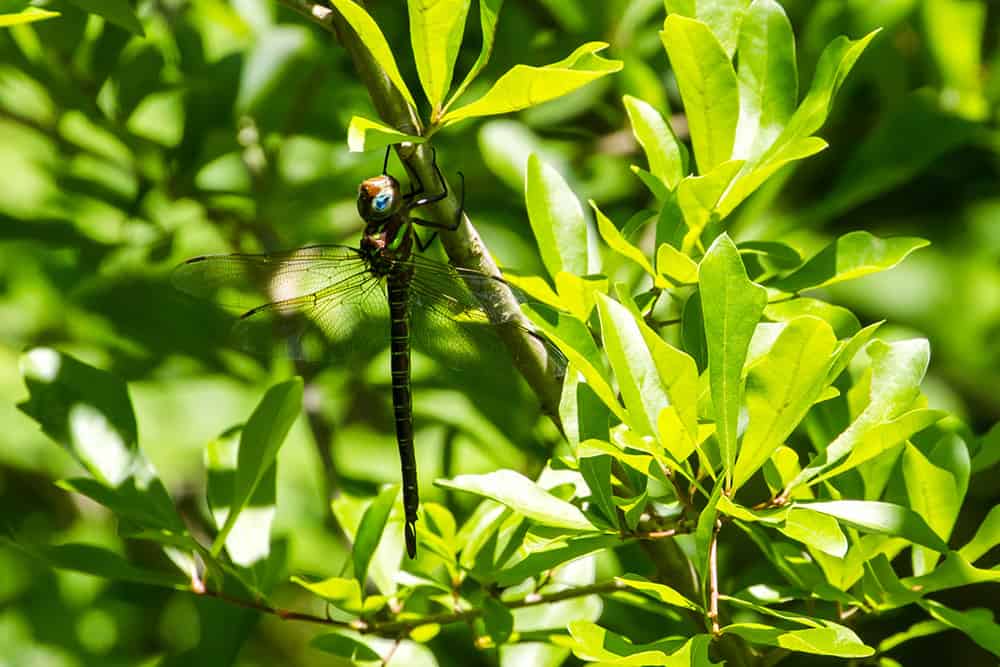
Well, I certainly didn’t get anywhere near the Odolympics medal podium (that honor goes to folks living in areas with lots of different types of water-adjacent habitat), but I had fun documenting a few days in the life of our local dragonflies. Want to learn more about these incredible creatures? A new study was just released about how males are evolving to lose the wing pigment that helps them attract mates. Why? Rising global temperatures mean that pigment is like wearing dark clothing on a summer day.

